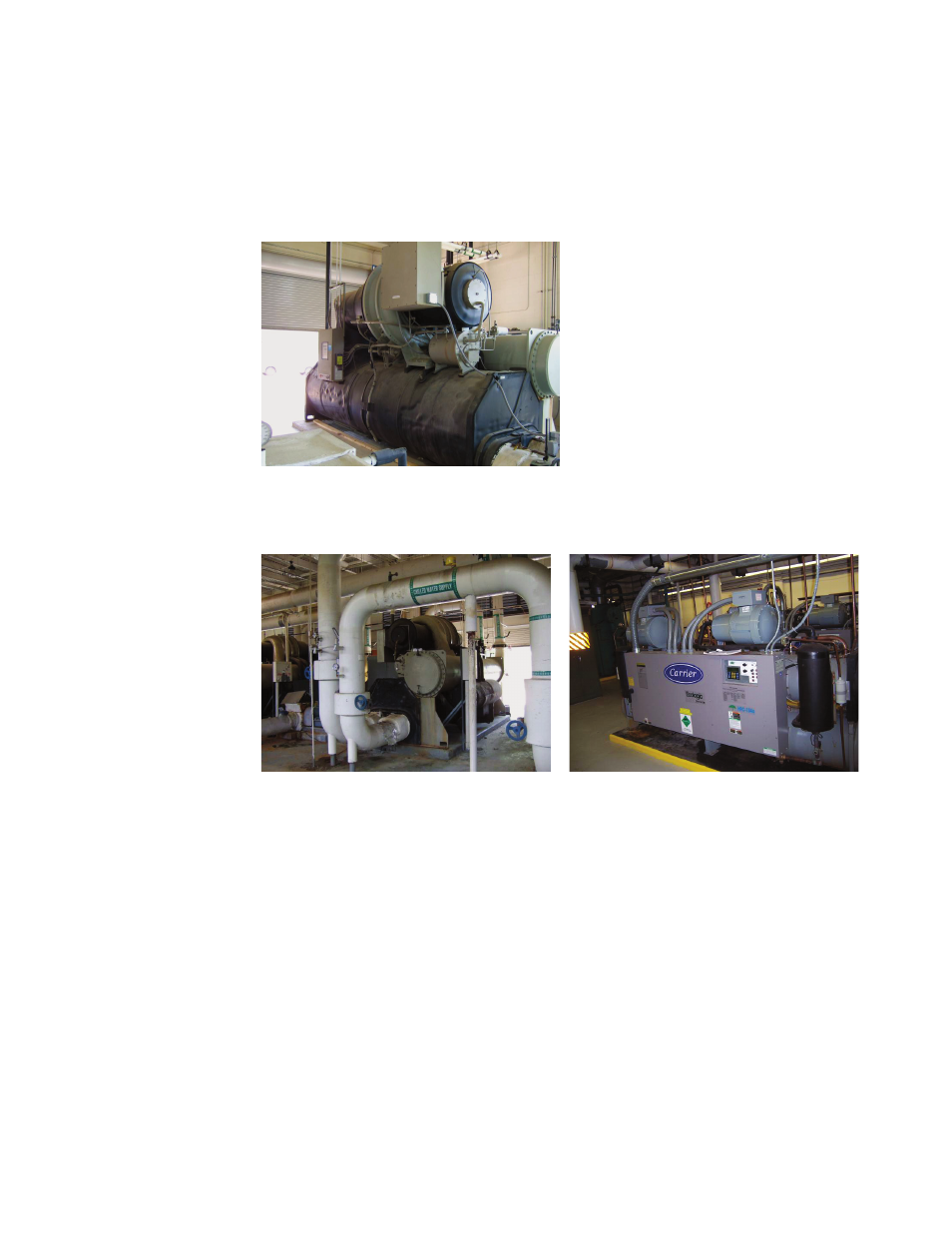Retrotec USACE User Manual
Page 198

D68 ENERGY & PROCESS ASSESSMENT PROTOCOL
The performance of cooling equipment at a low loading is not effi cient, espe-
cially if the equipment must cycle to function. This situation can occur when
functions of some of the building spaces change, when buildings are removed
from a central cooling system, or when year-round cooling needs are added.
Evaluate the potential for adding a smaller chiller that can operate during low
cooling demand times of the year.
Figure D118. Large chiller that has a diffi cult
time servicing building loads during mild
weather conditions.
D.4.2.9 Excessive Energy Use at Part Load Conditions
(Ineffi ciency)
Figure D119. Large chillers sized for peak
cooling loads.
Figure D120. Smaller two-compressor chiller
provides high effi ciency at part loads.
Cooling equipment can have excessive energy use when operating at part load
conditions (Figure D119). At these times, the cooling equipment is forced to
operate with low energy effi ciencies. This is caused because the equipment is
too large for the demand. Evaluate the potential for adding a smaller, more
effi cient chiller that can operate during low cooling demand times of the year
(Figure D120).
D.4.2.10 Water-Cooled Chillers Ineffi ciency (Ineffi ciency)
In a facility that uses a water-cooled chiller, energy conservation equals water
conservation. Less energy waste requires less cooling, and less cooling requires
less water evaporation from the cooling tower or fl uid cooler. Power plants on
